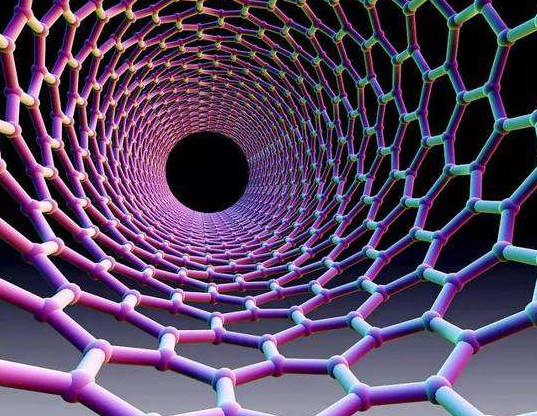- Home
- Products
- Elementary
- Boride Powder
- 3D Printing Powder
- Sulfide Powder
- Oxide Powder
- Carbide powder
- Nitride Powder
- Silicide Powder
- Hydride Powder
- Telluride Powder
- Selenide Powder
- Stearic Acid Series
- Phosphide Powder
- Nanoparticles
- Metal Alloy
- MAX Phase
- Lithium Battery Anode
- Surfactant
- Molecular sieves
- Concrete Admixtures
- News
- Answers
- Contact
- About
News
- 0
- 0
What is the difference between natural graphite and artificial graphite?
If you are looking for high-quality products, please feel free to contact us and send an inquiry, email: brad@ihpa.net
Russian president demanded that exports of Russian gas to "unfriendly" countries be settled in rubles. The demand has raised concerns in Germany about possible supply disruptions and the impact on industry and households if utilities do not pay in robles. Europe gets about 40% of its gas from Russia. Last year, Europe imported about 155 billion cubic meters. Germany, Europe's largest economy, depends heavily on Russian gas.
The chief executive of Germany's E.ON said the German economy would face "significant damage, which should be avoided if possible" without Russian supplies. He also said it would take Germany three years to wean itself off Russian gas.
In the event of a supply disruption, Germany's gas network regulator would prioritize home heating over industrial use, so energy-hungry manufacturers such as steelmakers would be the first to suffer, he said.
The volatile international situations will continue to affect the markets and prices of many commodities like the natural graphite.
Given that what is prepared from natural graphite is usually artificial graphite in the narrow sense, this paper will only analyze and discuss the differences and links between natural graphite and artificial graphite in the narrow sense.
Crystal structure
The crystal development of natural graphite is relatively complete, the graphitization degree of natural flake graphite is usually above 98%, and the graphitization degree of natural microcrystalline graphite is usually below 93%.
The degree of crystal development of artificial graphite depends on the raw material and the heat treatment temperature. Generally speaking, the higher the heat treatment temperature, the higher the degree of graphitization. At present, the degree of graphitization of artificial graphite produced in the industry is usually less than 90%.

Organizational structure
Natural flake graphite is a single crystal with a relatively simple structure, with only crystallographic defects (point defects, dislocations, stacking faults, etc.), and macroscopically showing anisotropic structural characteristics. The grains of natural microcrystalline graphite are small, the grains are disorderly arranged, and there are pores after the impurities are removed, showing the isotropic structural characteristics on the macroscopic level.
Artificial graphite can be seen as a multi-phase material consisting of a graphite phase transformed by carbonaceous particles such as petroleum coke or pitch coke, a graphite phase transformed by a coal bitumen binder encapsulated around the particles, particle accumulation, or pores formed after heat treatment of coal tar binder, etc.
Physical form
Natural graphite usually exists in powder form and can be used alone, but is usually used in combination with other materials.
There are many forms of artificial graphite, including powder, fiber, and block, while artificial graphite in the narrow sense is usually blocked, which needs to be processed into a certain shape when used.
Physical and chemical properties
Natural graphite and artificial graphite have both commonalities and differences in performance. For example, both natural graphite and artificial graphite are good conductors of heat and electricity, but for graphite powders of the same purity and particle size, natural flake graphite has the best heat transfer performance and electrical conductivity, followed by natural microcrystalline graphite and artificial graphite the lowest.
Graphite has good lubricity and certain plasticity. Natural flake graphite has better crystal development, smaller friction coefficient, best lubricity, and highest plasticity, while dense crystalline graphite and cryptocrystalline graphite are second, and artificial graphite is worse.
High quality graphite manufacturer
Luoyang Moon & Star New Energy Technology Co., LTD, founded on October 17, 2008, is a high-tech enterprise committed to the research and development, production, processing, sales and technical services of lithium ion battery anode materials. After more than 10 years of development, the company has gradually developed into a diversified product structure with natural graphite, artificial graphite, composite graphite, intermediate phase and other negative materials (silicon carbon materials, etc.). The products are widely used in high-end lithium ion digital, power and energy storage batteries.
If you are looking for graphite or lithium battery anode material, click on the needed products and send us an inquiry:sales@graphite-corp.com
Russia is a major supplier of industrial metals such as nickel, aluminium and palladium. Russia and Ukraine are both major wheat exporters, and Russia and Belarus produce large amounts of potash, an input to fertiliser. The price and market of the natural graphite will fluctuate under its influence. Prices of these goods have been rising since 2022 and are now likely to rise further because of the Russia-Ukraine conflict. Russia is a major supplier of industrial metals such as nickel, aluminium and palladium. Russia and Ukraine are both major wheat exporters, and Russia and Belarus produce large amounts of potash, an input to fertiliser. The price and market of the natural graphite will fluctuate under its influence. Prices of these goods have been rising since 2022 and are now likely to rise further because of the Russia-Ukraine conflict.
Inquiry us